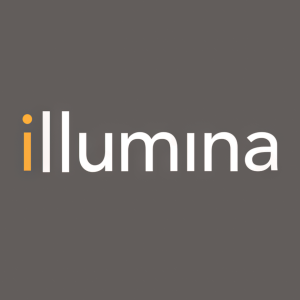Illumina unveils first-of-its-kind spatial transcriptomics technology
Rhea-AI Summary
Illumina (NASDAQ: ILMN) has announced a groundbreaking spatial technology program that will enable researchers to map complex tissues and understand cellular behavior at unprecedented scale. The technology, planned for commercial release in 2026, offers nine times larger capture area and four times greater resolution than existing technologies.
The company is partnering with the Broad Institute on a Spatial Flagship Project to demonstrate the potential of large-scale spatial datasets. The technology will be compatible with Illumina NextSeq and NovaSeq sequencers and will be paired with a new software platform, Illumina Connected Multiomics (ICM), for multimodal analysis.
Early research applications have shown promising results in studies of pulmonary fibrosis, prostate cancer, and 3D reconstructions of mouse brains. The technology enables examination of spatial proximity of millions of cells per experiment, identification of rare cell populations, and improved statistical power.
Positive
- New spatial technology offers 9x larger capture area and 4x greater resolution than existing technologies
- Technology will be compatible with existing Illumina sequencers, reducing costs for large-scale programs
- Partnership with prestigious Broad Institute enhances market credibility
- Early research applications demonstrate successful use in multiple fields
Negative
- Commercial release not until 2026, indicating long wait for revenue generation
- Reliance on third-party suppliers for critical components poses supply chain risks
- Success depends on customer acceptance of new products
News Market Reaction 1 Alert
On the day this news was published, ILMN gained 1.89%, reflecting a mild positive market reaction.
Data tracked by StockTitan Argus on the day of publication.
Broad Institute to collaborate on flagship project tapping Illumina's new spatial technology
At AGBT, customers will present data demonstrating unparalleled scale and sensitivity in research spanning pulmonary fibrosis, prostate cancer, and 3D reconstructions of mouse brains
Company expands software portfolio to decode multimodal data with Illumina Connected Multiomics
Details and early access customer data will be presented next week during Illumina's Gold Sponsor Workshop at the Advances in Genome Biology and Technology (AGBT) General Meeting in
"Spatial transcriptomics opens entirely new pathways to gain crucial insight into the cellular function of organisms," said Steve Barnard, PhD, chief technology officer of Illumina. "Illumina spatial technology will deliver another complete workflow on our leading sequencing platforms. With this innovation, we are setting a new bar that will drive the next wave of scientific discoveries and unlock a deeper understanding of biology—from the impact of cell interactions on disease to the mechanisms needed to solve them."
Spatial transcriptomics allows researchers to explore biological interactions at the cellular level. For instance, through "cell atlasing," which maps the detailed arrangement of cells, researchers can gain novel insights into complex tissue structures that affect disease. This enables discovery in areas ranging from tumor microenvironments to disease pathways, neurobiology, immuno-oncology, and more.
Planned for commercial release in 2026, Illumina spatial technology will allow researchers to examine the spatial proximity of millions of cells per experiment, enabled by a capture area nine times larger than existing technologies, and with four times greater resolution. By allowing researchers to analyze more cells in a single spatial experiment, the technology provides the ability to identify rare cell populations and improves statistical power for greater confidence in findings. As a complete end-to-end solution, it will also deliver the highest value for single-cell and spatial researchers at a more affordable price point. The spatial solution surpasses industry standards for scale and accuracy, and is compatible with Illumina NextSeq and NovaSeq sequencers, thereby materially reducing the cost of running large-scale programs.
New multimodal analysis platform delivers powerful insights, visualizations
The spatial technology will be paired with a new software platform, Illumina Connected Multiomics (ICM). ICM is a multimodal analysis platform that makes it easy for researchers to visualize the results of spatial experiments. ICM helps them navigate, explore, and analyze multiomic data sets, ultimately driving deeper insights from biological data. Its intuitive design and seamless integration with the sequencing workflow will allow any scientist to generate powerful statistical insights and interactive visualizations to decode multiple complex modalities, such as genomic, proteomic, spatial transcriptomic, epigenetic, and single-cell data, all in the same platform.
"Illumina Connected Multiomics will unlock a seamless workflow, from sample to analysis, providing the powerful visual and statistical analysis tools needed to accelerate the next wave of life sciences breakthroughs," said Rami Mehio, head of global software and informatics at Illumina.
Broad Institute and Illumina announce collaboration on Spatial Flagship Project
The Broad Institute and Illumina today announced their intent to collaborate on a groundbreaking Spatial Flagship Project, leveraging Illumina's cutting-edge spatial technology. The project will be conducted at the Broad Institute's Spatial Technology Platform (STP), with sequencing performed at Broad Clinical Labs.
Leveraging Illumina's advanced spatial technology, which provides an expansive 50 mm by 15 mm imaging area for enhanced flexibility, sensitivity, resolution, and unbiased whole-transcriptome discovery, the Spatial Flagship Project seeks to demonstrate the transformative potential of large-scale spatial datasets. This collaboration will generate large-scale, coordinated data from hundreds of samples provided by Broad Institute principal investigators, with the goal of advancing discovery in the spatial technology market. Additionally, the project will offer early access to Illumina's spatial technology to external research groups through the Broad Institute's STP pipeline, fostering broader engagement and accelerating innovation.
Illumina spatial technology is already driving real-world breakthroughs
During Illumina's workshop at AGBT, researchers from the Broad Institute, St. Jude Children's Research Hospital, and TGen will share data on real-world advances made possible by the new spatial technology.
- Pulmonary fibrosis research: Nicholas Banovich, PhD, associate director of the Division of Bioinnovation and Genome Sciences and the Center for Spatial Multi-Omics at TGen, will present his findings that underscore the power of high-resolution spatial transcriptomics to uncover novel disease mechanisms in pulmonary fibrosis.
"The scale and sensitivity of Illumina's new spatial technology is enabling us to study the whole transcriptome across large tissue sections," Banovich said. "Our early analyses with this technology identified and localized molecular dysregulation associated with active epithelial cell remodeling in pulmonary fibrosis. We believe this will aid in identifying therapeutic targets which can be used to stop or slow the progression of disease."
Banovich's poster, "Characterizing alveolar dysregulation in pulmonary fibrosis using the Illumina spatial technology," will be presented at AGBT. - 3D tissue reconstruction: Michal Lipinski, PhD, of the Broad Institute, led spatial research to build 3D reconstructions of mouse brains, achieving breakthroughs in the breadth of data achievable from 10 experiments on one slide, which has never been done before. The team's abstract concludes, "the experiments show that the new Illumina spatial technology can provide a highly efficient platform for large scale experiments, with further improvement in spatial resolution."
Lipinski said: "Large-scale and unbiased whole-transcriptome capture are the ideal components of a discovery platform capable of finding novel marker genes and simultaneously validating them across multiple tissue sections within a single experiment."
Lipinski's talk, "Large continuous area of spatial transcriptome profiling allows for efficient tissue characterization with high resolution and limited batch effect," will be presented at AGBT on Tuesday, February 25, 7:30–7:50 PM ET. - Prostate cancer research: Jasmine Plummer, PhD, director of the Center for Spatial Omics at St. Jude's Children's Research Hospital, will present her research demonstrating how high-resolution spatial sequencing reveals changes in a prostate tumor environment.
"Spatial omics provides the blueprint of the tissue, the pavement of the extracellular matrix, and the architecture of the cell," said Plummer. "This visibility can provide significant insight into cancer progression."
"With this new technology we were able to profile millions of cells on just two substrates and found biomarkers that are not included in targeted approaches," Plummer continued. "This improved transcript coverage allows the ability to drive rare cell type analyses, and these rare cell types were found to correlate to disease states within prostate cancer subgroups." - Maternal brain research: Darren Segale, PhD, senior director of scientific research at Illumina, will present a talk at AGBT on Tuesday, February 25, 8:30–8:50 PM ET, titled "A high-resolution spatial transcriptomic map of the pregnant mouse brain reveals regionally distinct gene expression regulation related to maternal behavior."
Overall, the solution will remove barriers to spatial research, providing researchers with a better understanding of the underlying biology of tissue samples and more confidence in the results of their experiments.
Illumina's Gold Sponsor Workshop will be held February 24, 12–1:30 PM ET. Illumina will demonstrate its end-to-end workflows throughout the AGBT conference in Osprey Lounge 1.
Use of forward-looking statements
This release may contain forward-looking statements that involve risks and uncertainties. Among the important factors to which our business is subject that could cause actual results to differ materially from those in any forward-looking statements are: (i) challenges inherent in developing and launching new products and services, including modifying and scaling manufacturing operations, and reliance on third-party suppliers for critical components; (ii) our ability to manufacture robust instrumentation and consumables; and (iii) the acceptance by customers of our newly launched products, which may or may not meet our and their expectations, together with other factors detailed in our filings with the Securities and Exchange Commission, including our most recent filings on Forms 10-K and 10-Q, or in information disclosed in public conference calls, the date and time of which are released beforehand. We undertake no obligation, and do not intend, to update these forward-looking statements, to review or confirm analysts' expectations, or to provide interim reports or updates on the progress of the current quarter.
About Illumina
Illumina is improving human health by unlocking the power of the genome. Our focus on innovation has established us as a global leader in DNA sequencing and array-based technologies, serving customers in the research, clinical, and applied markets. Our products are used for applications in the life sciences, oncology, reproductive health, agriculture, and other emerging segments. To learn more, visit illumina.com and connect with us on X, Facebook, LinkedIn, Instagram, TikTok, and YouTube.
Contacts
Investors:
Salli Schwartz
858-291-6421
IR@illumina.com
Media:
Christine Douglass
PR@illumina.com
![]() View original content to download multimedia:https://www.prnewswire.com/news-releases/illumina-unveils-first-of-its-kind-spatial-transcriptomics-technology-302379996.html
View original content to download multimedia:https://www.prnewswire.com/news-releases/illumina-unveils-first-of-its-kind-spatial-transcriptomics-technology-302379996.html
SOURCE Illumina, Inc.








